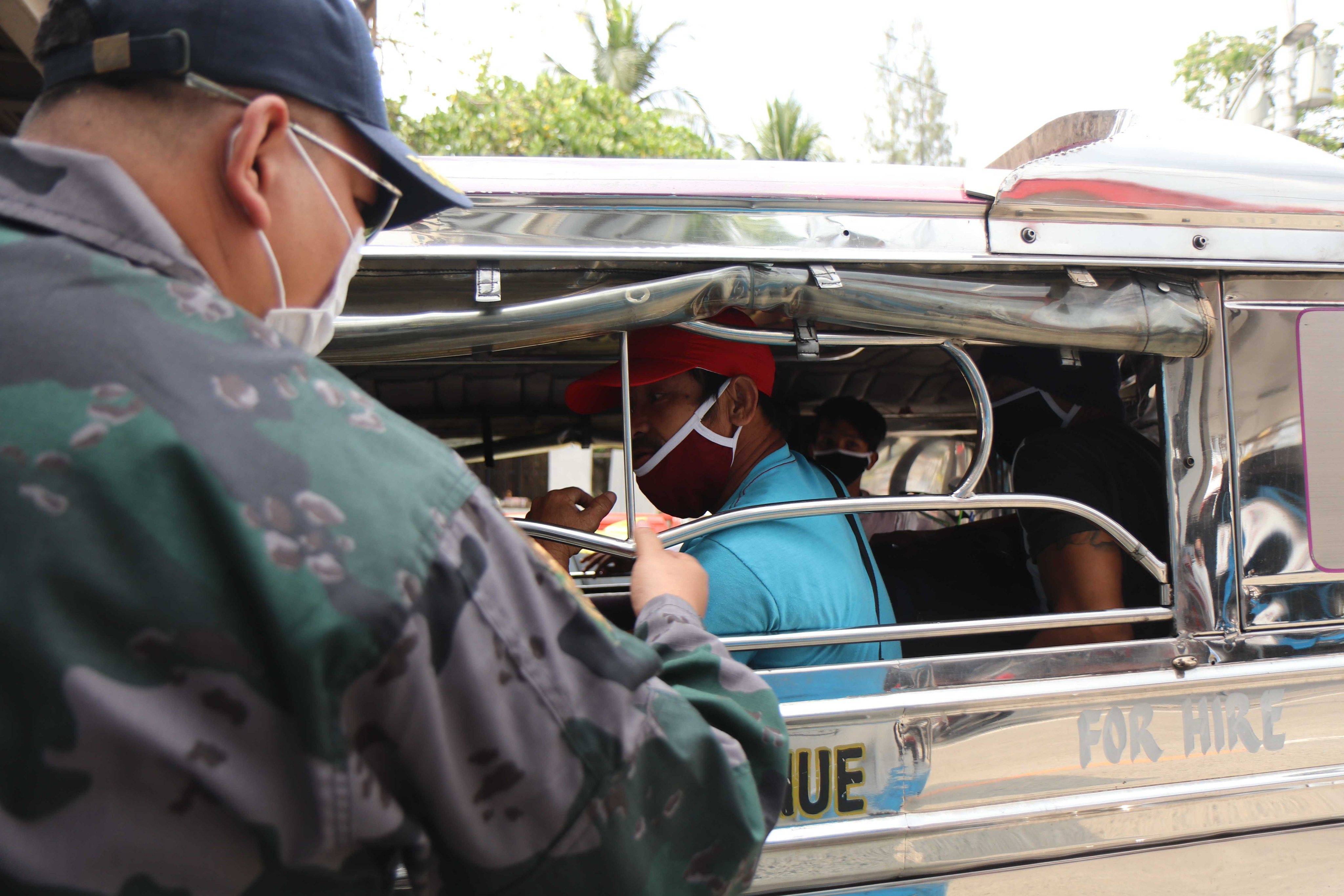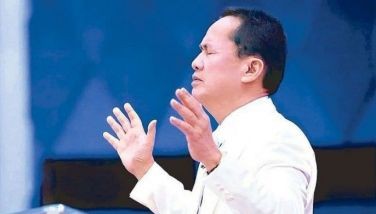Why some are saying 'social distancing' is a privilege
MANILA, Philippines — President Rodrigo Duterte last Thursday announced broad restrictions as the alert over the novel coronavirus (COVID-19) was raised to Code Red Sublevel 2, including a community quarantine over the National Capitol Region and more serious social distancing measures.
According to the US Centers for Disease Control and Prevention, social distancing means "remaining out of congregate settings, avoiding mass gatherings, and maintaining distance (approximately 6 feet or 2 meters) from others when possible."
As agencies announced specific guidelines for those measures, groups raised concerns over how the social distancing measures would affect vulnerable sectors like minimum-wage workers and those in the informal sector.
Among the guidelines are Department of Transportation instructions for public utility jeeps, trains and buses to implement social distancing by having passengers sit a seat apart and by limiting the number of commuters on board to from 25% to 50% of their usual capacity.
At a press briefing on Sunday, Police Maj. Gen. Debold Sinas, National Capital Region Police Office chief, highlighted that police would be strict in monitoring transportation.
"Kung ang capacity ng bus ay 50, dapat ang nakasakay lang ay 25. Dapat-one meter distance sa pila. Ang gagawin ng pulis, isisita sila."
(If a bus can carry 50, then it should only let 25 on board. There should be a one-meter distance between queud commuters. The police will scold them if this is not followed.)
"Pati yung waiting area, dapat-hindi tabi tabi. At least may gap ng one chair para hindi siksikan," he added.
(Even at waiting areas, commuters should not sit together. There should be a gap of one seat so they are not crammed together)
READ: NCRPO sees smoother implementation of quarantine by next week
For Jedd Ugay, chief mobility officer of commuter advocacy group AltMobility PH, what happens while waiting for a ride is cause for more concern.
"Kung mahaba at masikip pa rin ang mga pila, exposed pa rin ang taumbayan," he told Philstar.com in an online exchange.
"Kung magiintay din ang tao sa pila nang matagal, na-offset nun ang effect ng konti lang sakay."
(If the lines are long and cramped, people are still exposed. If they wait in line for a long time, the effects of having few passengers are offset.)
According to a 2012 assessment of the Philippine transport sector by the Asian Development Bank, the LRT-1 and LRT-2 carry about 579,000 passengers each day, while the MRT-3 line, which runs along the length of the Epifanio de los Santos Avenue, carries more than 400,000 passengers daily.
Hindi uubra ang "social distancing" sa bayang siksikan sa tren, siksikan sa bus, siksikan sa komunidad, siksikan sa classroom, siksikan kung may pila, at walang maayos na serbisyong panlipunan para sa mamamayan. Kaya tayo bulnerable lalo sa sakit eh. Sistema ang problema.
— Renato Reyes, Jr. (@natoreyes) March 11, 2020
Although there will be fewer passengers during the quarantine because of employees being allowed to work from home, majority of workers will not have the option to telecommute.
Labor group Bukluran ng Manggagawang Pilipino in a statement sent to Philstar.com said that social distancing is impossible given "the present state of the metro’s transportation and urban planning."
Kilusang Mayo Uno secretary general Jerome Adonis, meanwhile, said: "Mahirap po yan maimplement kasi tuwing rush hour dagsa ang pasahero. Kahit nga walang standing sa bus dikit-dikit naman ang mga upuan. So walang distance ang mga pasahero,"
(That's hard to implement because during rush hour there are a lot of passengers. Even if there isn't anyone standing in the bus, the chairs are still next to each other, so there isn't any distance between passengers.)
It's also a labor issue
Transportation and commuting are a problem because people, particularly workers, need to leave their homes in the first place.
On March 4, the Department of Labor and Employment issued Labor Advisory No. 9 encouraging flexible work arrangements for employees, such as working from home, the reduction of work hours and the rotation of worker schedules.
"The employers and employees are encouraged to explore other alternative work arrangements in order to cushion and mitigate the effect of the loss of income to employees," the advisory read.
However, the option is not for everyone, particularly those under a "no work, no pay" arrangement and those in the informal sector.
In a press conference Friday, Trade Secretary Ramon Lopez said that those who work in Metro Manila but live outside the capital could instead find a place to rent and for informal workers to sell their wares outside Manila for the duration of the lockdown, a pronouncement labor groups found insensitive and anti-poor.
According to labor BMP, many factories and workplaces are cramped and the poor working conditions and would mean workers would be at risk of exposure to COVID-19.
"Like everybody else, workers and their families want [to halt] the spread of COVID-19 but to take away our measly incomes for an entire month or ask us to make good with so little is already lethal if not fatal to our well-being," said BMP vice president Dominic Dilao.
For her part, Sen. Risa Hontiveros in a statement issued on Sunday called on the administration to provide cash assistance for the families affected by the quarantine, pointing out that a family's loss of income would worsen their health and make them more at risk for contracting COVID-19.
The senator said that at least 650,000 Filipino families could be affected by the economic implications of the lockdown.
"The government should immediately track down and extend P10,000 assistance to these households which will mostly come from vulnerable contractual workers and workers in the informal economy," she said.
RELATED: Why hoarding medical supplies is bad for everyone, including you
"This cash aid will keep Filipinos in poverty and near-poverty afloat during this COVID-19 crisis. It will help them cope with the expected inflation in goods due to the lockdown. In times of crisis, cashflow is crucial especially for poor Filipino families who need money for essential items like food, shelter, water, and medicine."
Conditions not suitable for 'home quarantine'
According to the latest Philippine Statistics Authority data, the National Capital Region is home to more than 12.8 million people and has a population density of 20,785 per square kilometer.
READ: Self-rated poverty highest in 5 years — SWS

In an online exchange, Coalition for People's Right to Health co-convenor Josh San Pedro told Philstar.com that the poor may be forced to break self-quarantine over "no-work-no-pay, or the mere impossibility of quarantine in poor living conditions in the country."
"Maraming living conditions in the Philippines are not suitable for 'home quarantine'," he added.
(There are many living conditions in the Philippines that are not suitable for home quarantine)
RELATED: Healthcare 'grossly neglected' in 'middle-income' Philippines, groups say
"Conditions have to be considered if we truly want quarantine to be effective, apart from being enforced."
Academics and activists alike have been saying that the Philippines has long been in a health crisis. In 2016, Duterte's first year in office, a study by NGO Viva Salud found that "8 people out of 10 in the [Philippines] report never having had a medical checkup or physical examination in their life."
“The reality is that access to healthcare in the country is still far from ideal. Only 43% of barangays have a functional [barangay] health station [or] center, and the ratios of health workers to the population is overwhelming," San Pedro told Philstar.com in an earlier interview in October.
Moving forward
“This is a huge burden for our minimum-wage earners: sa mga tindero’t tindera, mga jeepney and bus drivers, at iba pa na konting kalamidad lang ay nababaon na agad sa utang,” Hontiveros added.
Ugay also sent Philstar.com recommemdations for the transport sector:
- Removing number coding on PUVs permanently to immediately increase PUV supply
- Infusing government shuttles/buses to increase PUV supply and ensure that there is enough to serve passengers (and ensure "social distance") as government owned public transport doesn't have quotas and boundary systems and aren't dependent on passenger fare. This means they don't have to fill up the vehicle before starting their trip.
- Advocating for and building wider sidewalks. "Ang kitid o halos walang sidewalk, paano magkaka social-distancing?" he said.
- Biking to work is a good alternative to move around while avoiding crowds
"Instead of limiting people inside the public transport vehicle, dahil wala din siya effect kung mahaba at siksikan pa din sa pagpil, dagdagan na lang ang supply ng public transport para siguradong may masasakyan at mamaintain pa rin ang 'social distancing'," Ugay said.
(They should instead increase the supply of public transport so commuters will be assured of a ride and so 'social distancing' can be maintained)
"Matagal na dapat dinaragdagan ang public transport supply kasi walang dignidad na ngayon ang maraming taong nagsisiksikan para sumakay."
(Increasing the public transport supply is overdue because there is no dignity in so many people crammed together to get a ride)
RELATED: Mass transport in Philippines is in crisis — BAYAN
Bukluran ng Manggagawang Pilipino meanwhile called on the government to defer the collection of payroll taxes and suspend indirect taxes to cushion the effects of the month-long lockdown.
Adonis, too, sent Philstar.com a list of the group's requests for the Department of Labor and Employment written in a mix of Filipino and English, which includes:
- That the government along with the private sectors fund massive testing for their workers owing to the country's Occupational Safety & Health Law
- That if workers who are persons under investigations are later quarantined, this should be with pay
- That companies not use the ongoing virus as a reason to remove workers
- That companies immediately disinfect and take other measures to prevent the spread of COVID-19
As of this writing, there are some 156,000 confirmed COVID-19 cases globally. — with report from Agence France-Presse
- Latest
- Trending



























